
Sometimes it's the simplest link building methods that appear the most cost-effective.
But is that always true?
Among the many strategies for building backlinks, SEOs and marketers often mention using interviews successfully—me included!
Because most of the time, that's as easy as finding someone who needs expert quotes for their article, giving a great interview that fills all their gaps in industry knowledge, and there you go!
You get a citation in return, often in the form of a backlink.
And yeah—a bit of glory, too.
But it’s also very easy to forget that the potential to score backlinks from this activity can vary from platform to platform, email opportunity to email opportunity, and that it involves writing.
(A lot of it, sometimes.)
I always loved writing and being able to provide expertise for other outlets in return for a backlink.
So after using SourceBottle as opportunity platforms for a few years, I thought it was time to give the popular HARO (Help A Reporter Out) a try and see what backlinks I could gather from sharing my expertise there.
This is what happened when I used HARO for link building.
(Spoiler: It was fun, but didn't end up the way I hoped.)
An Interesting Experiment and a Problem to Resolve
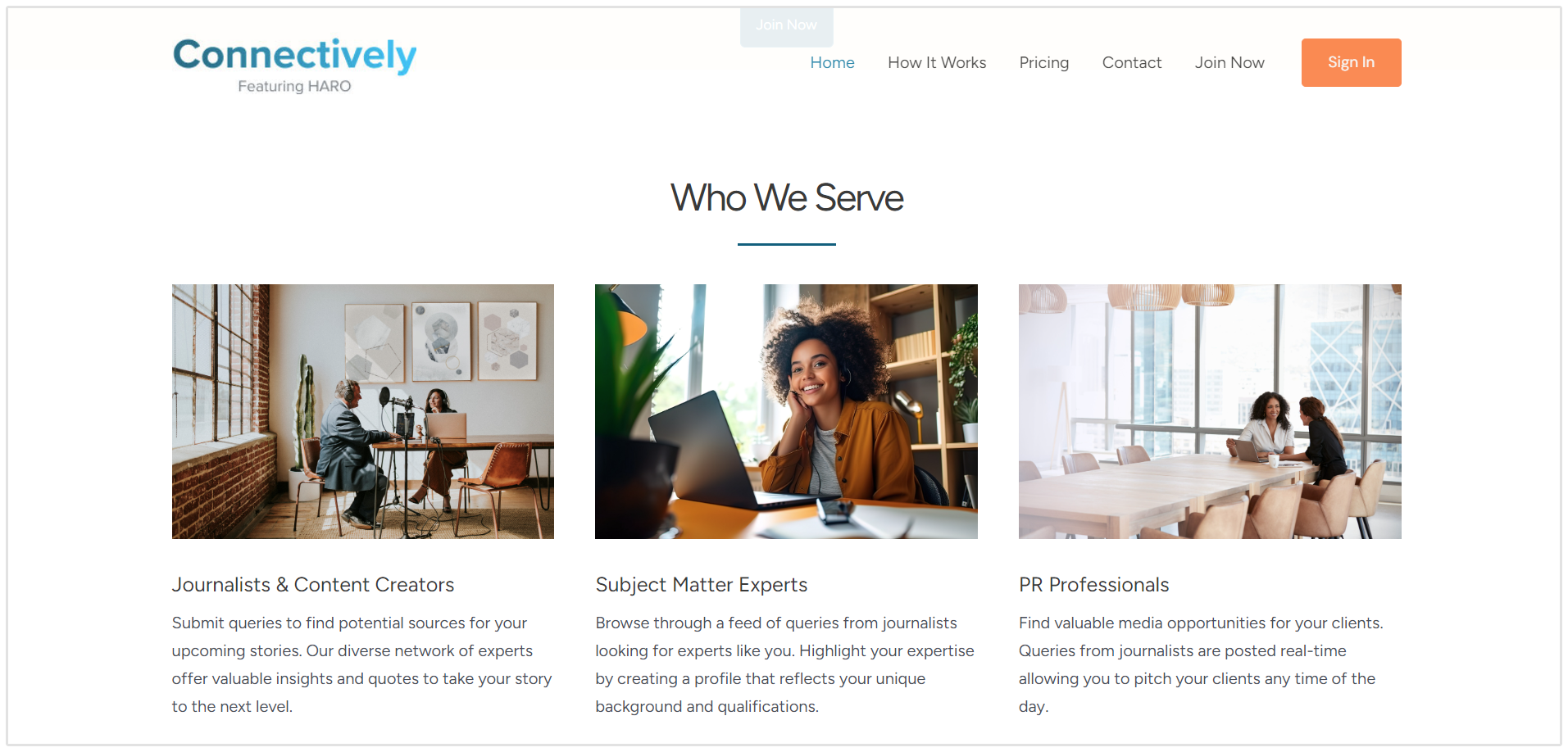
"Is there an effective link building strategy for companies and solo businesses on a shoestring budget?"
That question touched me personally as a business owner with little resources to spend on link building, and it became the drive that led me to try interview-based link building opportunities.
The lack of time and outreach potential that small companies and solo businesses have when it comes to link building is real, and it can often mean the loss of online business leads.
Besides, even smart companies with bigger budgets might still want to spend as little money and effort as possible on link building.
So, a strategy that involves simply responding to existing requests for quotes by journalists and bloggers looking for experts on a given topic sounds like the ultimate solution.
It could free them (and me) from the added burden of having to seek out websites to get backlinks from and actively reach out via email.
And now, we come to HARO...
While I've experimented with platforms like MyBlogU and SourceBottle before, rarely have I found a significant number of opportunities to get cited by big blogs or online magazines that are relevant to my niche.
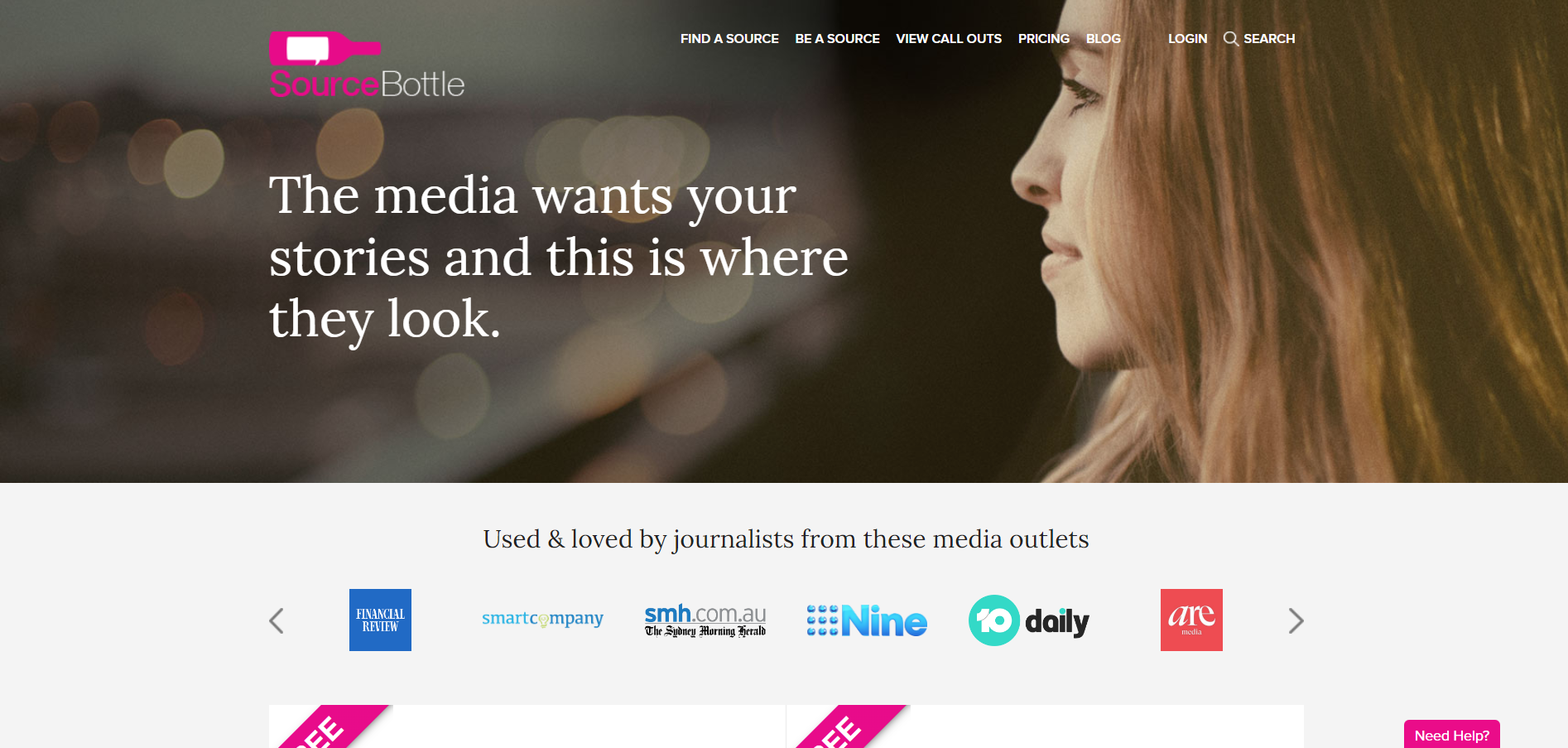
There are some opportunities on these platforms, but not as many as I’ve found on HARO.
So the next question was:
"Can I build good backlinks from reputed outlets using only HARO?"
That looked like an interesting experiment to set up.
And a safe one in the eyes of Google, too.
The premise is that since all you're doing on HARO is responding to writers’ queries, you are not actively building links, but sharing knowledge. It's up to the publication to credit you with a backlink, and to choose whether to make that backlink followed or nofollow.
Ultimately, these are all natural and editorial backlinks, and Google could never have anything to complain about if you get some while you're out there giving expert quotes to blogs, media outlets and other publications.
Developing a HARO Link Building Strategy
I decided to sign up to HARO as a Subject Matter Expert to start getting daily pitch emails in my inbox for free.
I was already registered as a Reporter, so all I needed to do was create a Subject Matter expert profile.
Once I saved my updates, I started getting queries via email within 24 hours.
Registering as a Source on HARO
If you don't have a pre-existing HARO account, the signup process is easy:
1. Go to the HARO homepage and click "Join Now".

This will take you to their Sign Up page.
2. Enter your personal details and click "Get Started". You'll be required to set your password by clicking on the "Set Up Password" button in the email you receive from Connectively a.k.a HARO.
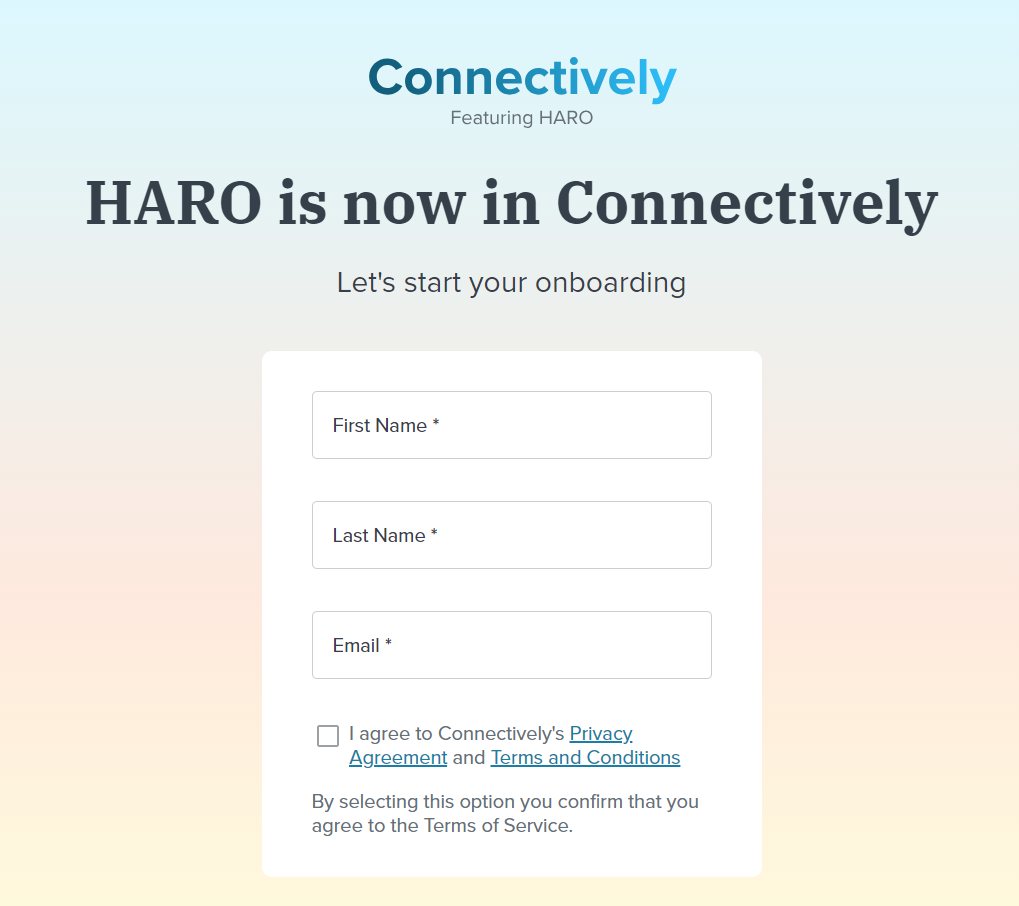
3. Once you've set up your password you'll be required to fill in your bio with details like your job title, wesbite, and topics you're an expert on.
When you've filled out your profile, you'll be taken to their pricing page where you can select which plan you'd like. They have a few options to choose from but for most SME's the Lite plan should be sufficient.
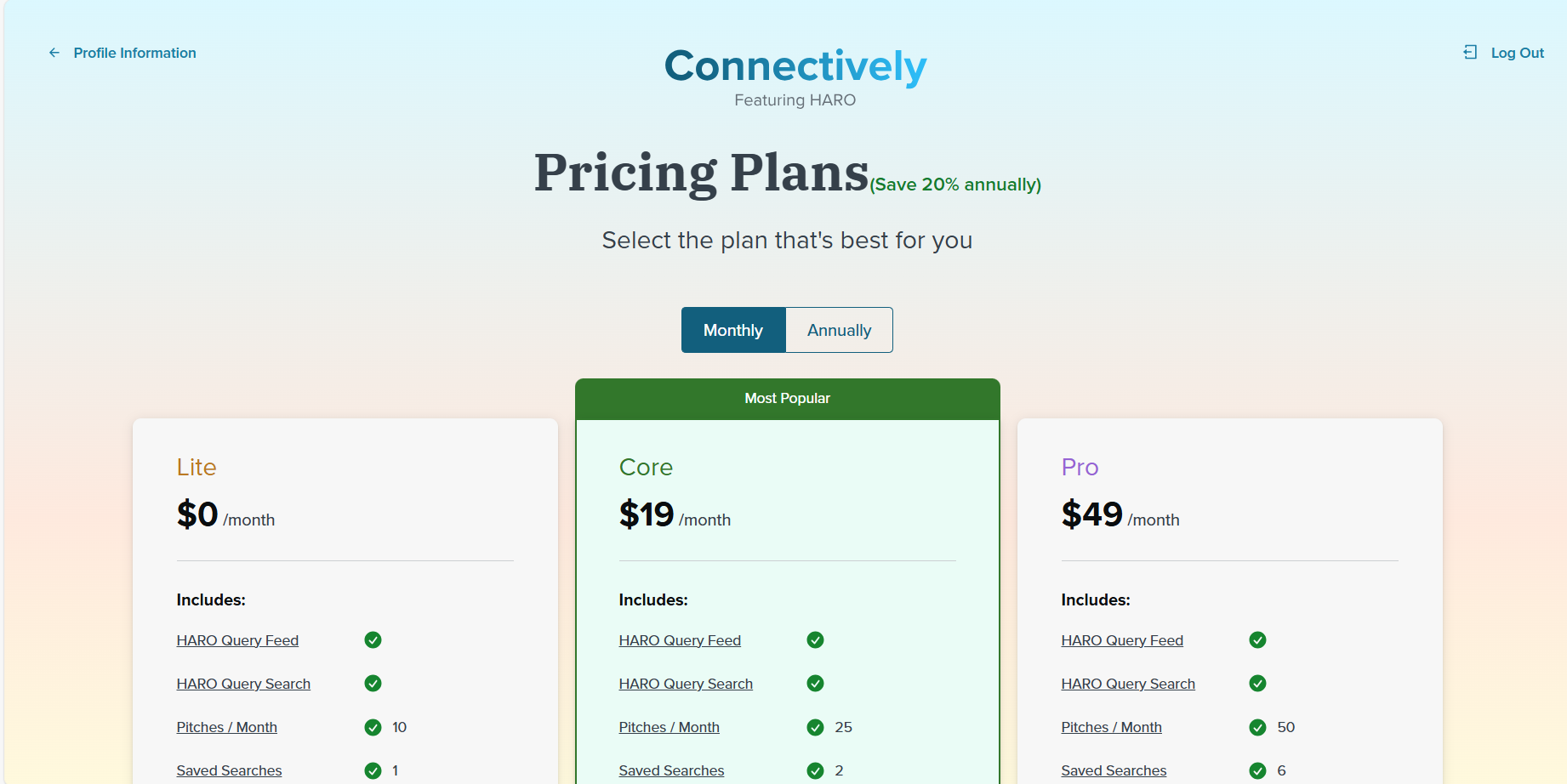
Once I was registered as a SME on HARO, all I had to do was wait for the daily emails to start coming in—a Morning, Afternoon and Evening edition.
Since I ran this experiment, HARO has updated their functionality which means instead of receiving 3 emails per day, you'll get access to a feed of queries which you can filter according to the topics you're interested in.
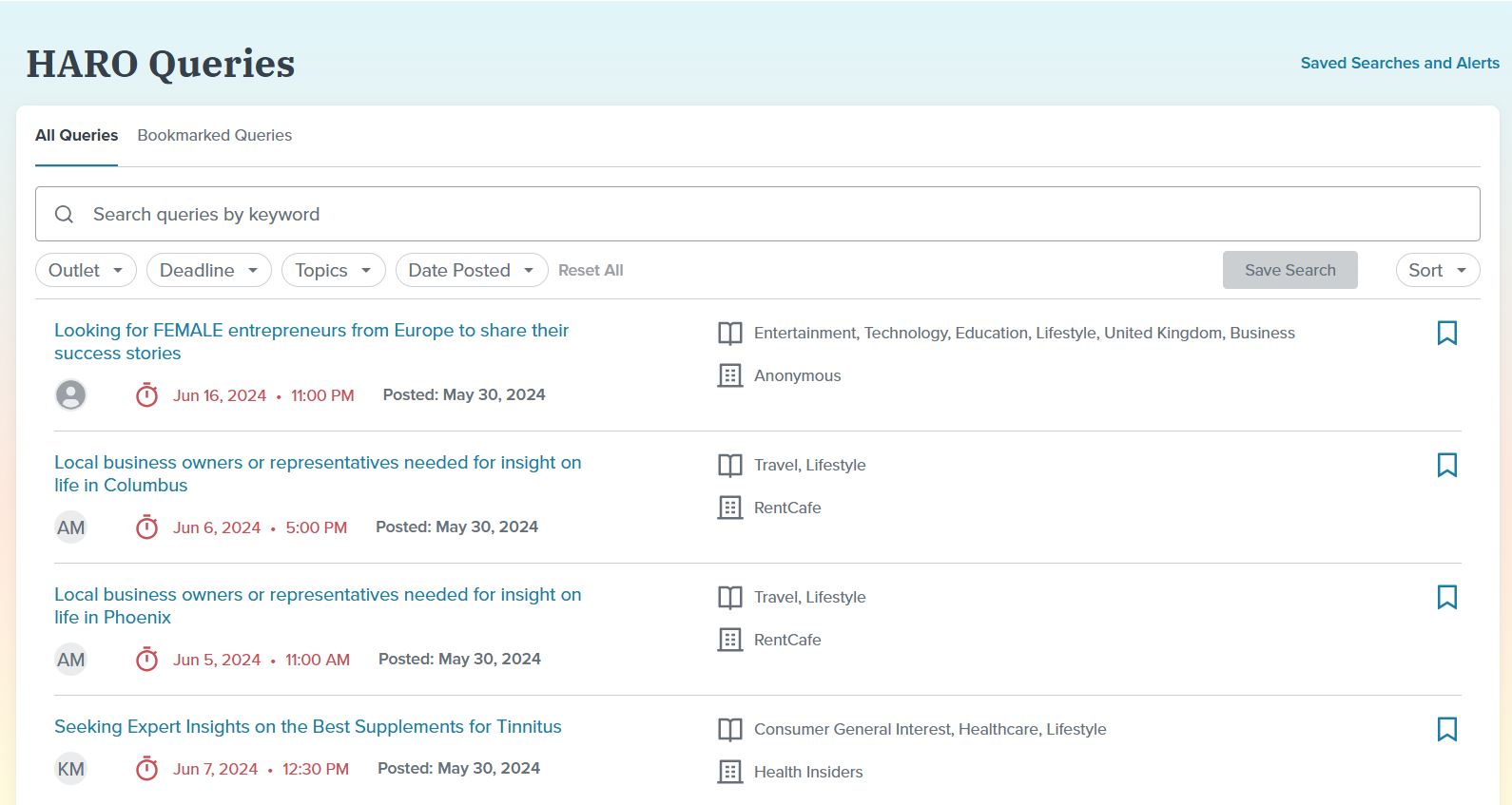
Here's a screenshot to give you an idea of what my inbox soon started to look like:
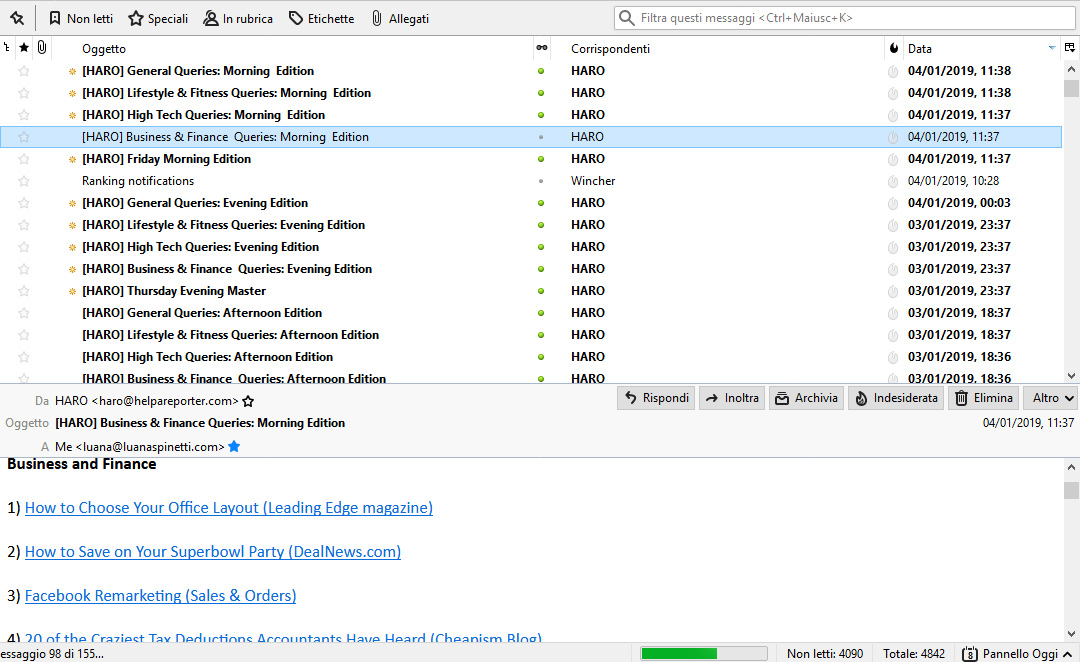
It looks like a lot to handle, right? Well, it was.
If I ignored my inbox for even two days, I would regularly come back to find it flooded with HARO query emails.
So, I decided to set up a number of pitching criteria to filter the queries and make my job easier.
My Criteria for Responding to Queries
When you take part in interviews or roundups for publication, you want to ensure that your time spent on that task is well spent and fruitful for your goals.
Because I knew how time-consuming it would be to write thorough quotes that suit the needs of specific publications, I set up a few criteria to optimize both my time and the ROI (in this case, backlink acquisition):
1. Build links for only two of my websites: luanaspinetti.com and mama.luana.me
2. Respond only to queries related to my niches (Marketing, SEO, Advertising, Motherhood)
3. Respond only to queries from online publications that will—or are most likely to—credit experts with a backlink
Applying these criteria greatly reduced my emailing workload and helped me focus my efforts to produce quality contributions for a smaller number of publications.
As for the best time of the day to respond to queries, I did my best to do it in the morning so that I could approach each query with a refreshed mind and better ability to concentrate on the task.
That wasn’t always possible due to deadlines, but I managed to do it about 40% of the time.
Tracking the Results
I used two things to track the results of my HARO link building experiment: SEOptimer and a good old spreadsheet.
1. SEOptimer
SEOptimer helped me monitor the incoming backlinks I got from HARO.
(Doing this manually would've been overkill!)
I added both of my domains to the tool for monitoring, and SEOptimer did the rest.
I received automatic email notifications whenever my domains received new backlinks, and I would also check my backlink profile every week to see them in more detail.
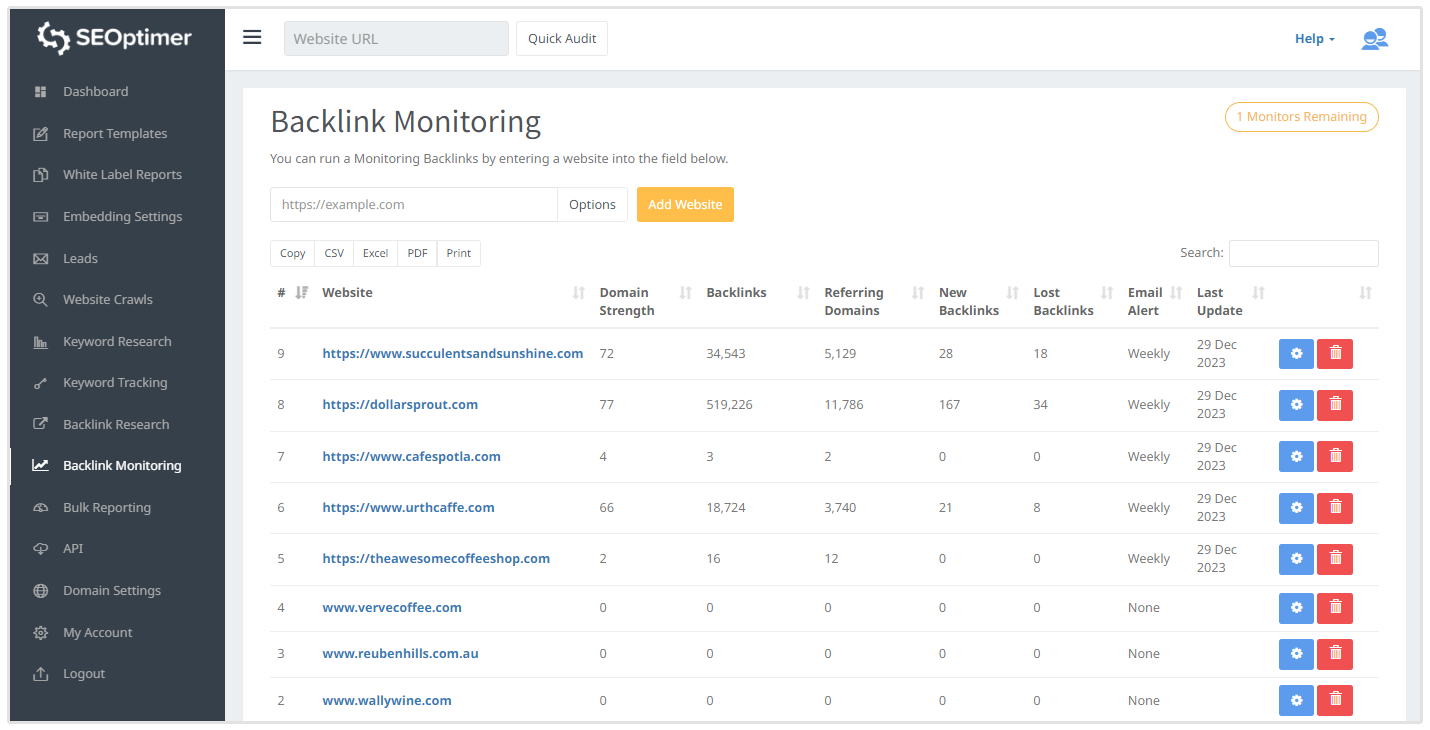
2. Goal-tracking Spreadsheet
As a companion to SEOptimer, I also set up a spreadsheet to document my efforts and keep track of which queries I responded to, when and for which publication.
This is what it looked like:

I owe you a few notes here.
I chose to divide my spreadsheet into six columns (and most of the information I could pull straight from SEOptimer):
1. URL/Topic — The topic of the query I responded to or the URL of the published contribution. Generally I'd note down the topic first, then replace it with the URL once it was published.
This was important because, obviously, I had to keep track of what I was interested in pursuing through HARO and where my contributions got published.
It was also useful because writers often took a long time to link back to me or follow up, and I didn't want to forget about them.
I used this column to document what I wanted to achieve and what I actually achieved, to be able to analyze my productivity and results later.
2. Outlet — The name of the outlet my contribution was published on.
3. Content Type — Roundup, research-based article, etc.
This column helped me keep track of what kinds of content I was contributing to, to give me an idea of which formats best suited my brand and expertise.
I also used it to keep track of my efforts to gain the most authority as a source in my niche(s).
For example, if my goal is to mostly contribute to research-based marketing articles and the majority of responses are for that format, then I know I’m on the right track for my goals.
4. Backlink Type — Followed or nofollow. Followed backlinks are more valuable to my SEO.
5. Backlink Anchor Text — The anchor text used to link to my website.
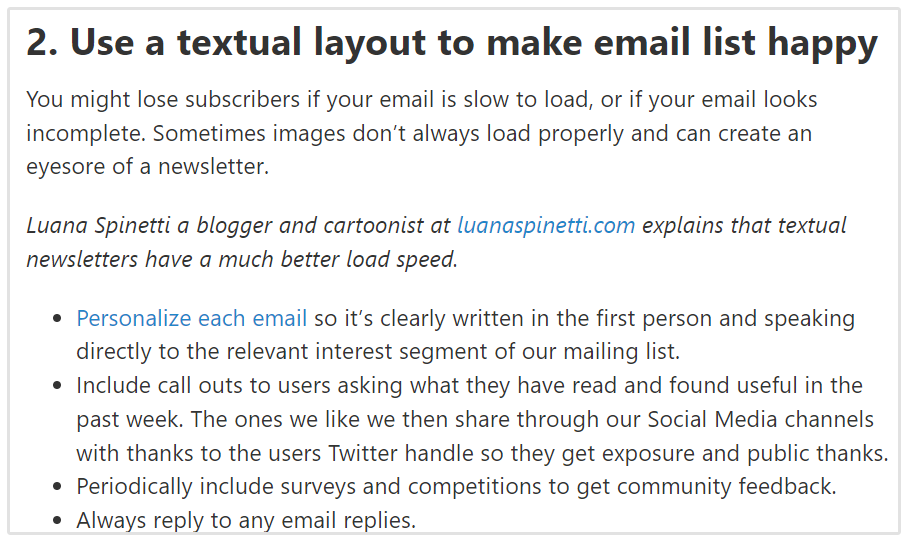
Has the publication chosen to use my full name or brand name instead of content specific keywords, niche keywords, etc.? I noted that down here to analyze later.
A mix of brand and niche keywords in the anchor text of HARO generated backlinks would be ideal to improve your backlink profile in the most natural fashion possible.
Keeping track of the anchor text used across the various contributions is also useful to make sure none of the publishers linked back to you using spammy anchor text.
That’s when it would be time to send them an email and ask for rectification, quick smart!
6. Date — The date I responded to the query preceded by an asterisk (e.g. *26/08/18), which I then replaced with the date the article and backlink was published, without an asterisk.
This was important for me to track my pitching productivity. Although for me personally, it was no longer necessary information once my contribution got published, so I replaced the response date with the content publication date.
Of course, if you were doing this yourself, your spreadsheet might be a bit different.
You might want to have two separate columns, one for the query response date and another for the published date. You can also do the same with the “Topic/URL” column, splitting it into two columns to keep the data separate.
Ultimately, the spreadsheet exists for you to document your link building efforts and you can customize it the way that best suits your marketing needs.
Implementing the HARO Link Building Strategy
I responded to a total of nine queries on HARO in February, August and October 2018.
If you haven't seen a HARO query email before, here's a sample that was sent to my inbox to give you an idea:
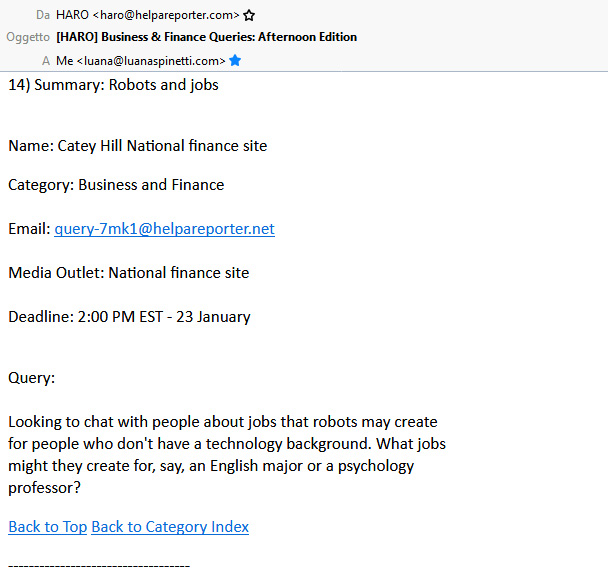
My initial hope was to get more query responses done, but due to the time-consuming nature of this task and my precarious health, I ended up doing half of what I'd estimated.
(I didn’t include an estimate here because I knew it was going to be a volatile goal given my health status.)
I chose to respond to queries in three main areas:
- Entrepreneurship/Business Ownership (4)
- Marketing & SEO (4)
- Motherhood (1)
More specifically, the queries were:
- What do I love about running my own business
- How I maximize time running my business
- How having a “student mindset” makes me a better business owner
- What’s my marketing strategy before product launch
- How to craft a good marketing newsletter (I responded to two queries about this topic!)
- What’s my budgeting strategy as a small business owner
- What’s my SEO strategy as a small business owner
- What kind of gifts I like receiving from my children
I think it’s rather obvious to infer which of these opportunities were for my professional website and which one (because it’s only one) was for my motherhood blog.
Among the queries that I had delivered to my inbox, I thought these were perfect for my expertise and they were a good opportunity to reflect on my own business practices as well.
Plus, while I could share my advice with others and help them through their problems, I still got myself a chance to score a good relevant backlink—one that would be the most natural to have in my backlink profile given my niche interests.
The queries about running my own business, budgeting and time management were all topics I love about being a business owner.
The marketing strategy for product launch and putting out a good newsletter were all areas where I could give first-hand advice because I’ve been there and done that myself.
You get the picture:
I replied to queries where I had something helpful and insightful to say.
Challenges I Encountered
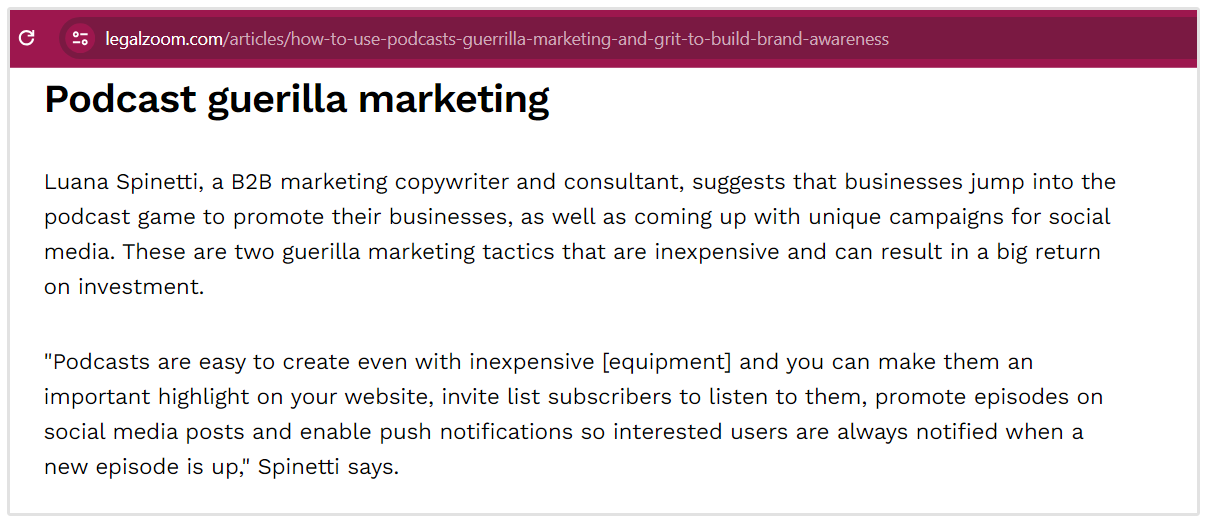
The main challenge I found with HARO link building was the time necessary to respond to queries.
This sometimes took me hours, and sometimes the query deadline even passed before I'd finished collecting my thoughts to produce a thorough response worthy of being included in an article.
If you’re thinking that sounds frustrating… yes, it was.
There were some pretty good queries and interesting topics with potentially great backlinks that I couldn’t respond to due to lack of time, and it was a real pity.
That’s when I realized that being able to outsource at least some of the query responses could be helpful.
For my own queries that I've sent out in the past as a Reporter on HARO, I've sometimes seen responses from a marketing or PR department member that were to be credited to the CEO.
Given the volume of PR they probably deal with every day, it completely made sense to outsource like that.
If I could have relied on even just one other person to handle the query responses with me, I would've sent out more than nine quotes, that's for sure.
Another challenge I had was that I encountered no queries that clearly stated whether a backlink would be followed or not.
So, I had to just cross my fingers and hope for a stroke of good luck when the article was published.
Also, I couldn’t find any relevant queries that would allow me to decide on the anchor text my website was going to be linked with.
This one was only partly a challenge. On the one hand, it's a positive from a Google link quality perspective, since it would absolutely be a natural backlink.
But on the downside, I had to pray that the writer or webmaster would link back with natural, non-spammy anchor text, or that they would at least use my full name (my personal brand) to link back to me.
Finally, there were some weeks where there was nothing of relevance or interest among the HARO editions that came into my inbox, so those weeks were completely unproductive.
The Results: Not the "Wow" Factor I Was Hoping For
Heh. It wasn't a garden of roses, that's for sure.
I didn’t get a response or confirmation from all the queries that I replied to, and I couldn’t find my contribution linked on the sites of those who didn’t respond, so my assumption is that they’ve either discarded my contribution or haven’t published it yet.
Both are entirely possible. Stuff happens and editorial calendars are subject to change!
You can see these in my spreadsheet—all the query topics that end with a “?” and that I didn't replace with a URL:

I received no response or confirmation for the queries about:
- How having a “student mindset” makes me a better business owner
- What’s my marketing strategy before product launch
- How to craft a good marketing newsletter (x1)
- What’s my budgeting strategy as a small business owner
- What’s my SEO strategy as a small business owner
That's a total of five queries that produced no results.
But as for the results I did get? Let's take a closer look.
Backlinks
Out of the nine queries I responded to, I was published with a backlink five times, two nofollow and three followed (that's a 40/60% split—not bad!).
It's also worth noting here that while I didn't get a response to one of my queries about how to craft a good marketing newsletter, the other one ended up being split into two articles, which gave me two followed backlinks instead of one.
So it wasn't all bad! Overall, I can't complain. Three followed backlinks from good websites in my niche are not something to depreciate!
They were also well placed contextually.
Here's one of them from referralrock.com. You can see that they've used niche keywords in the anchor text followed by my full (brand) name in a journalism-style quote:
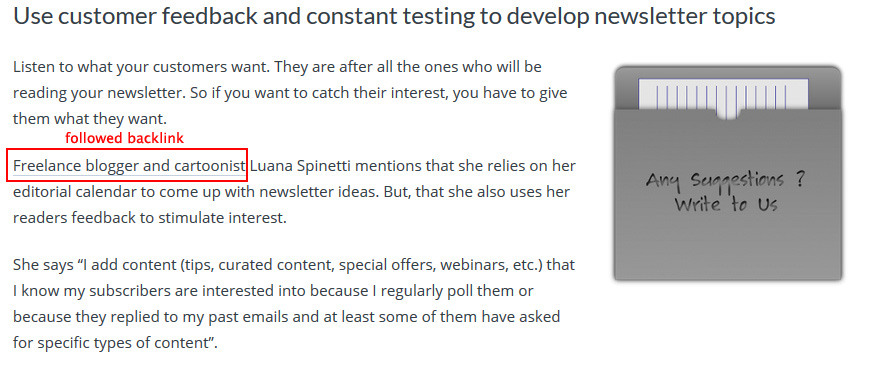
In my second followed backlink from referralrock.com, my website URL is linked as-is followed by a quote from my email:

And here's the followed backlink I got for my motherhood blog from upjourney.com, using my full (brand) name as the anchor text:

As you can see, the authors did me and my websites justice.
The strategy simply wasn't as effective as I hoped, and I'll explain why below.
Inbound Traffic
Despite the effort, I haven't seen any inbound traffic coming from the backlinks I got from HARO to my business website (I don't have the analytics set up for my motherhood site).
Here's a screenshot of my analytics showing referral traffic for luanaspinetti.com between September and December 2018:
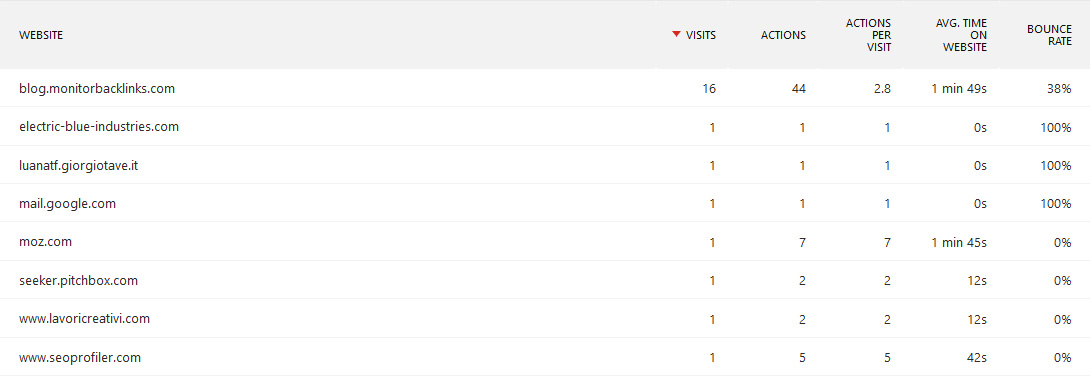
None of the two domains I got backlinks from using HARO (referralrock.com and ceoblognation.com) are showing up as referrers in this time span, even though the backlinks were both published during this time and indexed by Google.
I can see that it's a completely natural link (with natural anchor text), it's followed and indexed, and it comes from a website with a nice Trust Flow (11) and Citation Flow (21).
Yet... no inbound clicks.
Maybe readers decided that I wasn't interesting enough to click that "Freelance blogger and cartoonist" anchor text and pay my website a visit?
I was a little bit luckier here. My server logs show that this backlink was clicked once in November 2018:

While I'm certainly not going to claim victory for just one click, this backlink still had more success than the great ones I got for my business site.
So now I have a few nice backlinks, but (for the moment) they aren't bringing in the traffic I was looking for.
Overall Rankings
Rankings for my motherhood blog showed some improvement after the backlink went live.
My average ranking moved from 75+ to 68.7 in less than a month.
All in all, given the limited amount of backlinks and inbound traffic I managed to score from HARO for these two websites, it wasn't that bad.
Will I Keep Using HARO for Link Building?
You bet!
I had a year of experimenting with HARO. Now I know what works and what doesn't (and you do too, since you've read my case study up to here—thank you!), and I can set up a better plan for the new year.
Interview-based link building is still one of the link building methods I love the most. It's based on human relationships and expertise sharing with definite audiences, so it's going to keep its place among the strategies I use.
(Plus, it's fun!)
However, in terms of efficiency, HARO interviews are not the best method of backlink acquisition. Other methods based on simple email outreach like link reclamation and suggesting useful resources would probably get me results a lot faster.
Recommendations
To improve the experience next time, I would add a few more things to my HARO link building plan:
- Pick two days of the week to browse through HARO queries
- Try to respond to interesting queries within 24 hours
- Give preference to big publications over smaller niche blogs
- Document every response and backlink
- Ask websites that publish my contributions to keep my details on file (for new direct opportunities)
- Build professional relationships with publications and journalists for potential collaborations
Maximizing the effort is key!
And giving preference to big sites over smaller ones is a criterion that I should've kept in sight when I first started experimenting with HARO, but I'm still glad I didn't overlook the newer websites because I know from experience that they're generally more willing to give followed backlinks.
I'm also going to make a sticky note next time to remind myself to check how many social shares the content on those websites is getting.
Just run the domain through BuzzSumo to get an idea—more shares means more inbound traffic!
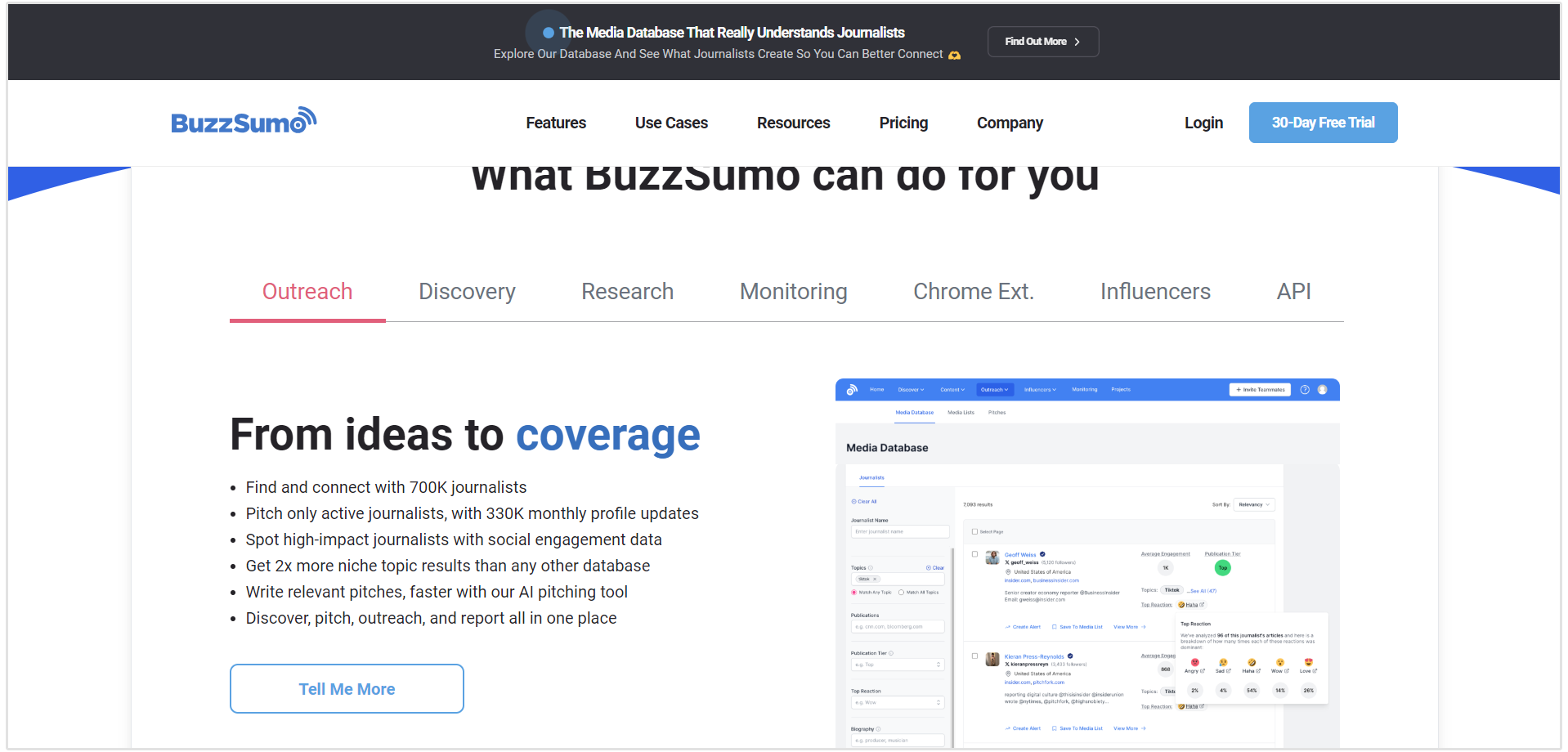
Final Thoughts on HARO Link Building
HARO is not exactly inexpensive as a link building method.While it's definitely free from a monetary aspect, it's still very time-consuming to use in practice to build quality backlinks.
You're expected to respond to queries by providing thoughtful and helpful contributions—and you don’t even know if and when they’re going to be published.
Or if the backlink will be followed at all.
So, ultimately, unless you can rely on:
- A marketing team
- Money to outsource query responses to someone else, or
- A lot of time on your hands
...then I don’t recommend this strategy for quick backlinks. They wouldn’t be quick to obtain, anyway.
However, don't discard HARO completely from your marketing basket.
HARO is still great for reputation building and scoring free opportunities to get mentioned in major publications that are relevant to your industry.
Just don't get your hopes too high about the link building side of things—so many variables are outside of your control.
Thanks for reading this case study. To your success!










